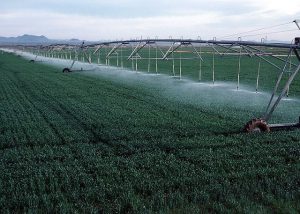I’ve seen a number of articles in the last few days describing impacts of groundwater withdrawals on infrastructure and agriculture. Here are two that struck me.
Sputnik News reports that the Chinese city of Beijing is sinking at the rate of 11 cm (over 4 inches) per year due to heavy withdrawals of groundwater. The city has been sinking since at least 1935, but the rate of sinking has accelerated as the population has grown tremendously over time. As a result, in 2015 the Chinese authorities began a mega engineering project to pump water from the south to China’s more arid and industrialized north. The project aims to slow the sinking process, which threatens cities with destructive tidal waves and flooding. You can read about it at https://sputniknews.com/asia/20160627/1042001317/beijing-sinking-11cm-per-year.html.
AgWeb reported that farmers in the central Plains are looking at the end of irrigated agriculture as the Ogallala aquifer drops due to overuse of water and naturally slow recharge rates. Farmers there grow a variety of crops, all of which need water: “18 inches per year for corn, 10 inches to 12 inches for sorghum, and 6 inches to 8 inches for cotton. But row-crop farmers aren’t the only ones drawing on the Ogallala. Big dairy farms, which also use a lot of water, have moved to Kansas and Texas in recent years.” This will seriously curtail the amount of crops that can be produced in this area when the water runs out. Estimates range from 50-100 years before the water is gone, although in some areas it is already too deep to pump economically, while other areas have a longer supply. According to a 2013 study by the Kansas Department of Agriculture, every irrigated acre that converts to dryland carries a loss of $4,000. You can read the article here.
